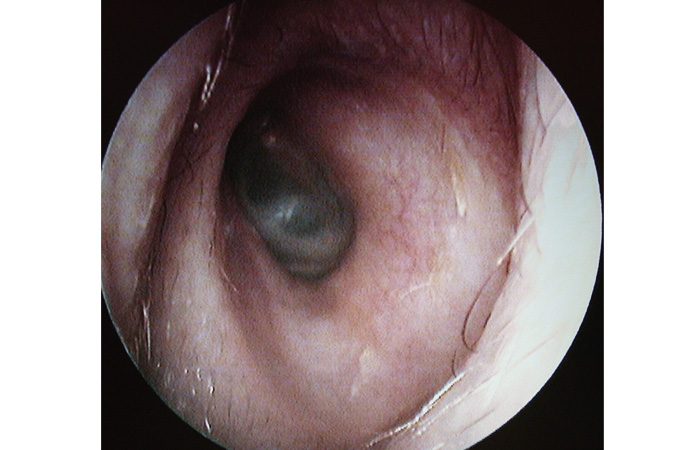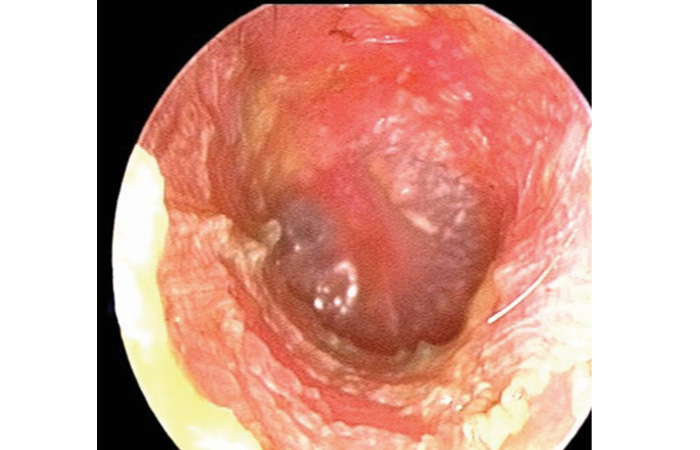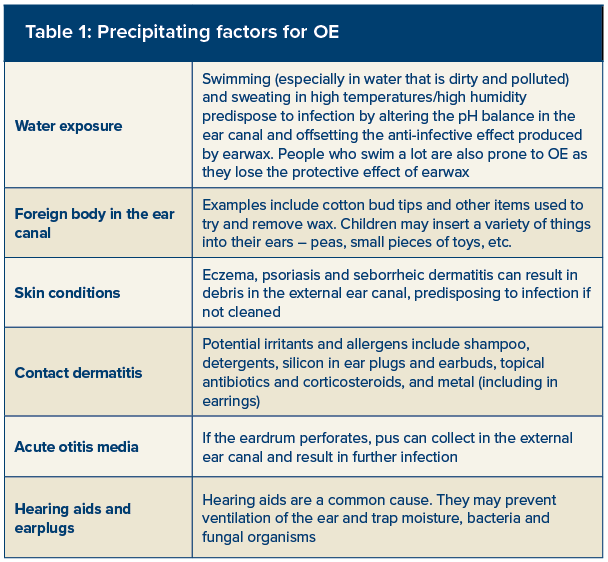Understanding the issue
One in 100 people are estimated to suffer from OE annually in the UK. Incidence is five times higher in swimmers than in other people – hence the reason why it is also known as ‘swimmer’s ear’.
Typically, symptoms usually develop increasingly over one or two days, with mild cases having ‘sogginess’, itching and discomfort of the ear canal(s). OE is often bilateral, so it affects both ears. Symptoms of more severe OE is ear pain with signs of tenderness of the tragus and/or pinna (which may be severe and with possible jaw pain), often with ear discharge.
On examination, the ear canal will be red and may be swollen. Figure 1 is an otoscopic picture of a normal ear canal; figure 2 shows the ear canal as red and swollen and the presence of debris and ear discharge. There may also be swelling and, in severe cases, there may be occlusion of the ear canal. The eardrum may be difficult or impossible to see if the ear canal is narrowed or filled with debris. Hearing may be muffled or distorted, but significant hearing loss is rare.


It is possible that similar symptoms can arise from a middle ear infection (acute otitis media). In such a situation, which usually involves a child, the middle ear infection is likely to be associated with a respiratory tract infection. As the middle ear infection develops, so does the pain. It is often intense and remains so until the drum perforates, alleviating the pressure and pain and leading to a discharge.
Taking a good patient history is essential, including asking questions about any previous OE as well as swimming or recent foreign travel (often associated with swimming pools). Precipitating factors for acute otitis externa are summarised in Table 1.

